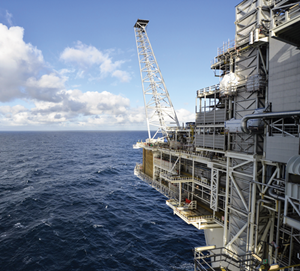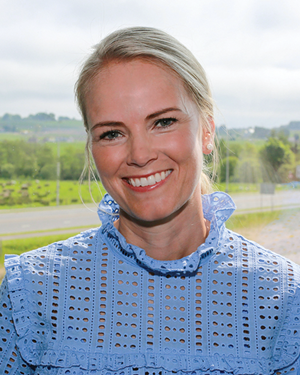Inflow control proves helpful for Troll

Recently, independent global completions service company, Tendeka, announced it had secured the world’s largest sand and inflow control contract for Troll field on the Norwegian Continental shelf (NCS), Fig. 1. The major, four-year exclusive contract with Equinor will see the Aberdeen-headquartered company deliver and install up to 100,000 m, annually, of its sand screens and FloSure autonomous inflow control devices (AICDs) for sand-face completions.
An initial contract between the two companies for Tendeka to provide screens and ICD/AICDs was signed in 2012, with a further two extensions later agreed. The new agreement offers five additional two-year extension periods. Since Tendeka first deployed FloSure technology in Troll field during 2013, the field-adjustable production optimization technology has been enhanced for use in new and retrofit applications across five continents. These range from marginal heavy oil developments in Canada to new field developments across Asia and gas cap expansions in the mature North Sea basin.
“The Troll field represents the backbone of Norwegian oil and gas production,” said Karianne Amundsen (Fig. 2), Scandinavia Area manager with Tendeka. “As this is overlaid by a thick gas cap, the aim is to maximize oil production, using our FloSure AICDs and thereby eliminate the associated problems of too much gas production, which could potentially render the well inoperable.”
As a large subsea development, which started oil production in 1995, Troll’s multilateral, horizontal wells are drilled with total reservoir length between 3 and 5 km within the thin oil column (Halvorsen, et al, 2016). By postponing gas breakthrough and then choking production after breakthrough, the use of AICDs will allow greater oil recovery. Currently, more than 50 wells on Troll are equipped with the technology.
Prior to the contract award, Tendeka worked closely with the Norwegian operator to further develop the FloSure rate-controlled production (RCP) AICD, delivering improvements in overall performance and gas control.
Simple design, optimum performance. AICDs comprise only three components: valve body, nozzle and disc, and are small enough to be installed within standard, passive ICD housings. Importantly, the size of the nozzle on the device is interchangeable at the rig, based on drilling results. Deployed as part of the lower completion, using zonal isolation packers to divide the reservoir into compartments, the AICD can be integrated with sand control screens for soft formations.
“It’s an incredibly versatile technology,” explained Amundsen. “Knowing how to apply the technology correctly by quantifying the value and optimizing the design is crucial. We’ve developed our own modelling software to be able to predict the performance of the AICDs in any application. This is where our expertise is second to none.”
On Troll, all new wells are infill wells that are drilled in between branches of older or abandoned wells, They intersect areas of varying oil column thickness. Here, wells need to be drilled with care to avoid early gas breakthrough and sand production to surface.
The depth of the oil/water contact in these longer, horizontal multilateral wells varies, as do the reservoir properties. Therefore, the wells are completed with stand-alone sand screens and inflow control devices to monitor flowing and shut-in pressure for the individual branches.
When gas or water flows through the AICD valve at the same drawdown, the velocity of the water and gas will increase, reducing the dynamic pressure. To restrict the flowrate of low-viscosity fluids, this action will levitate the disk toward the inlet to choke the flow. AICD technology is fundamental for continuing oil production on profitable margins and, as such, significant mechanical design modifications have been implemented for improved completion integration, robustness and longevity.
New and retrofit applications. FloSure AICDs have been deployed successfully in light and heavy oil wells to overcome water or gas breakthrough and ensure uniform production longevity. For example, it has been implemented successfully as a pilot project in horizontal wells at Jasmine and Ban Yen fields, in the Gulf of Thailand, to reduce gas breakthrough. The AICD well has now been producing for more than one year and at significantly lower gas-to-oil ratios than previously (Triandi, et al, 2018).
In Canada, the design resulted in an overall increase in oil production of 150% to 250%, with water production reduced 40% to 50%. This led to an improved return on investment of more than 250% per well, with a far lower risk of water problems, compared to the previous solutions applied (Moradi, et al, 2018).
Several wells have been completed recently with AICDs for a major operator in the Middle East. The AICD completion has reduced the water cut of the wells to below 50%, compared to 90% in the analogue wells, limiting the water production from the fractures. Several other new AICD wells are being planned in the Middle East. Following successful installation in pilot wells, retrofitting existing completions with AICDs is now a common practice for some operators.
Tendeka has, so far, employed more than 35,000 FloSure AICD valves in over 210 wells worldwide. As seen at Troll and other developments, the implementation of AICDs has not added complexity or HSE risks to the completion and production of these wells. It has clearly shown that it can significantly increase oil production, extend well life, and ultimately lead to greater oil recovery.
- Advancing offshore decarbonization through electrification of FPSOs (March 2024)
- Subsea technology- Corrosion monitoring: From failure to success (February 2024)
- Driving MPD adoption with performance-enhancing technologies (January 2024)
- Digital transformation: A breakthrough year for digitalization in the offshore sector (January 2024)
- Offshore technology: Platform design: Is the next generation of offshore platforms changing offshore energy? (December 2023)
- 2024: A policy crossroads for American offshore energy (December 2023)
- Applying ultra-deep LWD resistivity technology successfully in a SAGD operation (May 2019)
- Adoption of wireless intelligent completions advances (May 2019)
- Majors double down as takeaway crunch eases (April 2019)
- What’s new in well logging and formation evaluation (April 2019)
- Qualification of a 20,000-psi subsea BOP: A collaborative approach (February 2019)
- ConocoPhillips’ Greg Leveille sees rapid trajectory of technical advancement continuing (February 2019)



